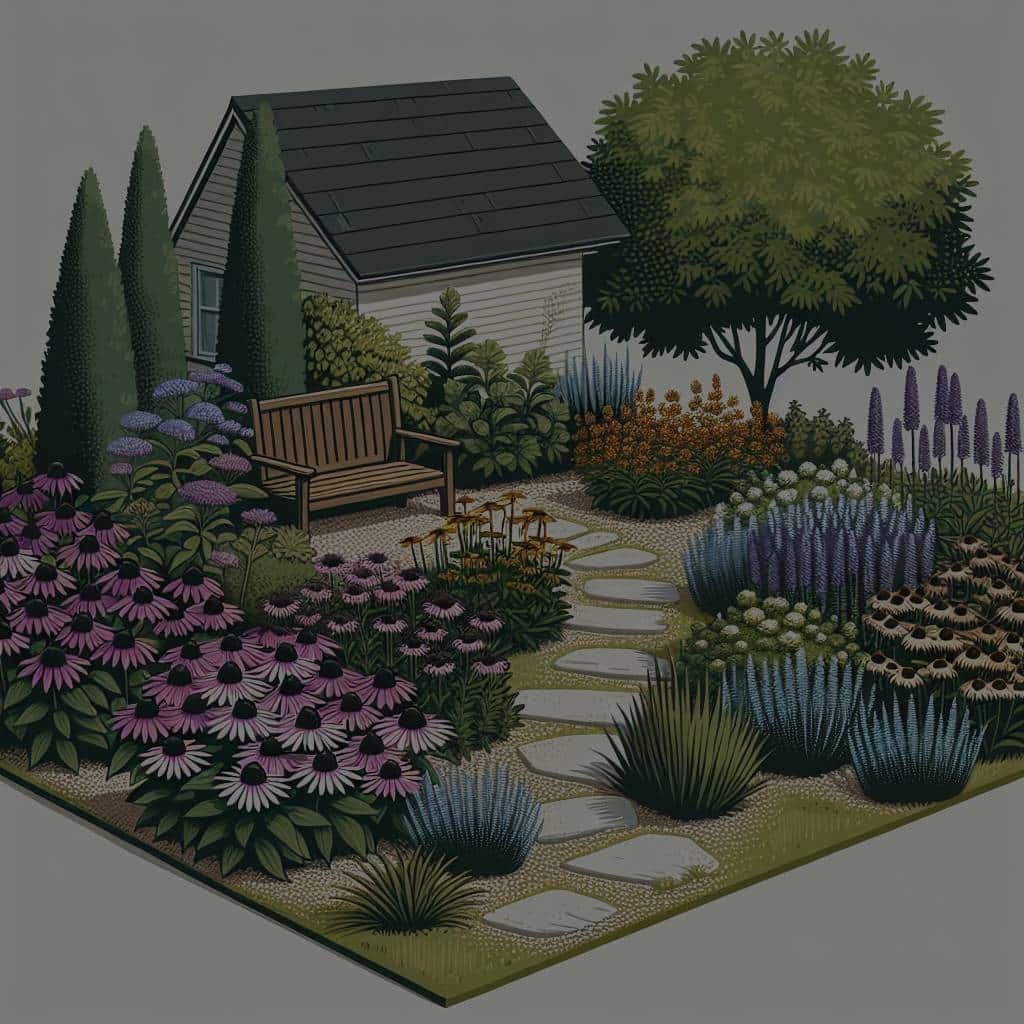What Are the Best Native Perennials for a Low-Maintenance Home Garden?

Perennials are a gardener’s best friend. These plant allies return year after year, saving you time and effort. Their hardiness and adaptability to local climates make native perennials an ideal choice for a low-maintenance home garden. But how do you choose the right ones for your patch of green? Let’s delve into the characteristics, benefits, and prime examples of the best native perennials that will transform your home garden into a vibrant, fuss-free haven.
Understanding Native Perennials
Native perennials are plants indigenous to a specific region. These perennials have naturally adapted to local conditions over hundreds, if not thousands, of years. They’re accustomed to the local soil types, temperature ranges, and the amount of rain and sun that their native region typically experiences. This makes them notably hardy and able to survive with little intervention.
A voir aussi : What Are the Best Organizational Systems for a Home Library by Author?
One of the most significant advantages of native perennials is their resistance to local pests, diseases, and drastic weather changes. Their strong immune systems can ward off most common garden threats without the need for chemical interventions. Plus, they attract local pollinators like butterflies and bees, promoting a healthy ecosystem in your garden.
Sun-Loving Perennials
For gardens that receive full sun, some native perennials thrive under the bright rays. These plants can tolerate the heat of the summer and require well-drained soil.
Sujet a lire : How to Create an Energy-Efficient Aquarium Setup at Home?
A standout sun-loving perennial is the Purple Coneflower (Echinacea purpurea). This magnificent plant has striking purple flowers that attract butterflies and other pollinators. It’s a drought-tolerant plant, which means it can survive in hot, dry conditions.
Another excellent choice is the Butterfly Weed (Asclepias tuberosa). Don’t let the name deceive you; this plant attracts an array of butterflies, contributing to the garden’s vibrancy. It produces clusters of bright orange or yellow blooms that light up in the full sun.
Shade-Tolerant Perennials
On the other hand, if your garden is graced with ample shade, there are perennials that thrive in less sun. These plants appreciate cool, moist soils and can be a vibrant addition to shadowed garden areas.
A renowned shade-loving native perennial is the Virginia Bluebell (Mertensia virginica). Its charming blue flowers flourish in the spring, providing a bright contrast to the shade. It prefers moist, well-draining soil and can reach heights of one to two feet.
Similarly, the White Wood Aster (Eurybia divaricata) is a resilient plant that thrives in shade. It has dainty white flowers that bloom in late summer to early fall, adding beauty to your garden even as the season changes.
Drought-Tolerant Perennials
Drought tolerance is an essential characteristic if your region experiences dry spells regularly. Drought-tolerant plants are built to withstand low-water conditions and perform optimally in well-drained, sandy, or rocky soils.
One of the best drought-tolerant native perennials is the Blanket Flower (Gaillardia). It’s a colorful, hardy perennial that does well in full sun and dry conditions. Its vibrant red and yellow flowers bloom throughout the summer, attracting pollinators and adding a bold splash of color to your garden.
Another great choice is the Yarrow (Achillea millefolium). This robust perennial features clusters of small flowers in various shades, including white, pink, and yellow. It’s extremely drought-resistant and will add a delicate touch to your garden with its fern-like foliage.
Moisture-Loving Perennials
If your garden tends to stay moist due to lower sun exposure or a high water table, certain perennials will revel in these conditions. Moisture-loving perennials require well-draining soil that stays consistently damp.
The Swamp Milkweed (Asclepias incarnata) is a perfect example. This native perennial loves wet soil and full sun. It produces clusters of pink flowers that will attract butterflies, specifically the Monarch butterfly, making your garden a butterfly haven.
Similarly, the Cardinal Flower (Lobelia cardinalis) thrives in moist conditions. This plant sports bright red flowers that burn brightly in the summer and early autumn seasons, attracting hummingbirds and giving your garden a vibrant pop of color.
Choosing native perennials for your home garden will provide you with a vibrant, low-maintenance garden that respects the local ecosystem. Whether your garden receives full sun, partial shade, is prone to drought, or tends to stay moist, there is undoubtedly a native perennial perfect for your gardening needs. You’ll be rewarded with a garden that thrives year after year, requiring minimal intervention, and attracting a host of beneficial wildlife.
Understanding Plant Hardiness Zones
An essential factor to consider while choosing native perennials is your region’s plant hardiness zone. The United States Department of Agriculture (USDA) divides North America into 13 different hardiness zones based on the minimum winter temperatures. Each native plant is adapted to thrive in specific zones.
Hardiness zones are crucial as they help determine which plants are most likely to thrive in a specific location. For instance, the Purple Coneflower, a sun-loving perennial mentioned above, thrives in hardiness zones 3-8. This means it can tolerate winter low temperatures between -40 to 20 degrees Fahrenheit.
Selecting native perennials that are suitable for your hardiness zone can save you a lot of time and effort in the long run. These plants will naturally adapt to the season changes and will be more resilient in the face of local pests and diseases. It’s always best to refer to a hardiness zone map or consult with your local nursery or extension service to ensure you’re choosing the right perennials for your area.
How to Plant and Care for Native Perennials
Native perennials are generally low maintenance, but they do require basic care to thrive. The first step is to prepare your garden bed correctly. Ensure your soil is well-drained and enriched with organic matter.
When you’re ready to plant, dig a hole that’s twice the width and the same depth as the plant’s root ball. Place the perennial in the hole, ensuring the top of the root ball is level with the soil surface. Backfill the hole with soil, pressing it down gently around the roots.
Post-planting, water the perennial thoroughly. During the first year, ensure your native perennials get an inch of water per week. However, bear in mind that the watering schedule will depend on the type of perennial, the soil type, and the season. For instance, drought-tolerant plants like the Yarrow will require less water than moisture-loving plants like the Swamp Milkweed.
Lastly, while native perennials are generally deer resistant, it’s a good idea to use a natural deer repellent if these animals frequent your property.
Conclusion
Whether you have a sun-drenched garden or a cozy shaded corner, understanding your garden’s conditions and selecting the right perennials can help create a vibrant, low-maintenance space. Native perennials, with their adaptability and hardiness, can withstand local climates and pests much better than non-native species.
From sun-loving Echinacea purpurea to moisture-friendly Swamp Milkweed, native perennials offer a multitude of options. With a bit of basic care and attention to your hardiness zone, these resilient plants can enhance your garden’s aesthetics and ecology with minimal effort. Plus, you’ll be doing your part in preserving and promoting your local ecosystem, making your garden not just a visual treat, but a haven for local wildlife as well.
